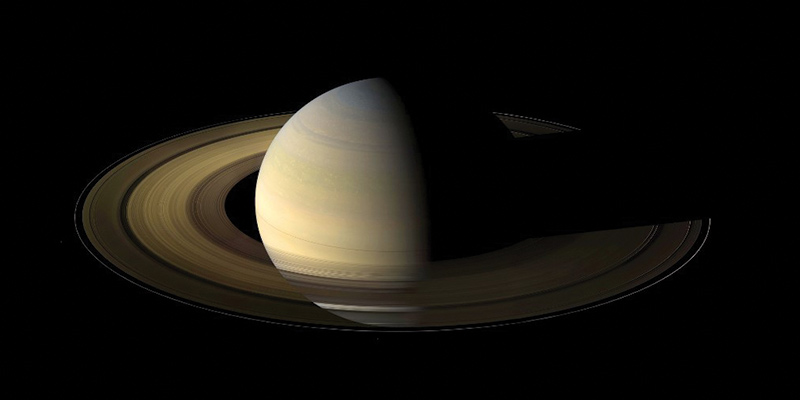- World
- Jun 22
Scientists discover massive energy imbalance on Saturn
• A discovery by researchers at the University of Houston has revealed a massive energy imbalance on Saturn, shedding new light on planetary science and evolution and challenging existing climate models for the solar system’s gas giants.
• This is the first time that a global energy imbalance on a seasonal scale has been observed on a gas giant.
• Not only does this give us new insight into the formation and evolution of planets, but it also changes the way we should think about planetary and atmospheric science.
• The findings appear in the scientific publication Nature Communications.
• Using data from the Cassini probe mission, researchers found a significant and previously unknown seasonal energy imbalance on Saturn.
• The Cassini mission, an ambitious, collaborative effort between NASA, the European Space Agency and the Italian Space Agency, launched in 1997 and explored Saturn and its rings and moons for nearly 20 years.
Key findings:
• Every planet gets energy from the Sun in the form of solar radiation and loses energy by emitting thermal radiation. But Saturn, like the other gas giants, has another energy input in the form of deep internal heat affecting its thermal structure and climate.
• The imbalance is due to Saturn’s large orbital eccentricity which varies by nearly 20 per cent from aphelion (the point in orbit farthest from the Sun) to perihelion (the point in orbit closest to the Sun) resulting in huge seasonal variations in absorbed solar energy.
• Unlike Saturn, Earth does not experience a significant seasonal energy imbalance due to its very small orbital eccentricity.
• Earth does have a measurable energy budget, but it’s primarily determined by absorbed solar energy and emitted thermal energy. Earth’s internal heat is negligible and its seasons last only a few months compared to seasons that are several years long on Saturn.
• The data also suggests that Saturn’s unbalanced energy budget plays a key role in the development of giant storms which are a dominant weather phenomenon in the planet’s atmospheric system. This data may also provide some insight into weather on Earth.
• In current models and theories of the atmosphere, climate and evolution of the gas giants, the global energy budget is assumed to be balanced. But researchers believe the discovery of this seasonal energy imbalance necessitates a reevaluation of those models and theories.
Quick facts on Saturn:
• Saturn is the sixth planet from the Sun and the second largest planet in our solar system.
• Adorned with a dazzling system of icy rings, Saturn is unique among the planets.
• Like fellow gas giant Jupiter, Saturn is a massive ball made mostly of hydrogen and helium.
• Saturn has a thick atmosphere.
• It has a lovely set of seven main rings with spaces between them.
• It is not the only planet to have rings, but none are as spectacular or as complex as Saturn’s.
• One day on Saturn goes by in just 10.7 hours.
• One year on Saturn is the same as 29 Earth years.
• As of June 8, 2023, Saturn has 146 moons in its orbit. The moons range in size from larger than the planet Mercury — the giant moon Titan — to as small as a sports arena.
• Saturn is visibly flattened at the poles, a result of the very fast rotation of the planet on its axis.
Manorama Yearbook app is now available on Google Play Store and iOS App Store

